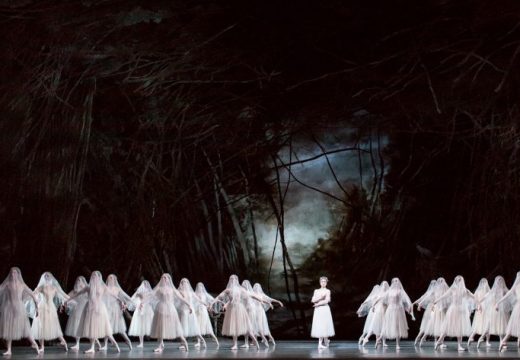Introducing Rakewell, Apollo’s wandering eye on the art world. Look out for regular posts taking a rakish perspective on art and museum stories.
What to say about Stephen Sondheim (1930–2021)? For anyone obsessed with the Great American Songbook and its crossover with musical theatre, it’s hard to overstate how confidently Sondheim picked up cues from his predecessors and how greatly he expanded our sense of what a musical can be. Your roving correspondent was lucky enough not to miss out on the great run of revivals that were around in London in the late 1990s and early 2000s. (And could that really have been Damian Lewis playing Red Riding Hood’s Wolf and Cinderella’s Prince in Into the Woods at the Donmar Warehouse? We rather think it was.) Commercial success on Broadway may sometimes have eluded Sondheim and his producers, even as the critical plaudits and prizes kept coming – it’s still staggering that Merrily We Roll Along (1981) ran for only 16 performances after opening – but perhaps this is the only possible initial reception for genuine innovation in an art form of which so little is expected.
Sunday in the Park with George (1984) is, famously, Sondheim’s most heartfelt paean to artistic persistence, to the concentration and even obtuseness it requires to keep going in the face of hostility or, worse, indifference. The first act presents us with Georges Seurat sketching Dot, his uncomfortable model and discontented lover, before moving on to various figures in a scene who tell us what they’re thinking, too. The painting requires all of the pointillist’s attention to the detriment of his personal relationships until, in a coup de théâtre, Sondheim’s Seurat finally captures all the figures in A Sunday Afternoon on the Island of La Grande Jatte in a full-scale tableau on stage.
In the recently published Putting it Together: How Stephen Sondheim and I Created ‘Sunday in the Park with George’, James Lapine, who wrote the ‘book’ (i.e. the story) of the musical, describes how he showed postcards of artworks to Sondheim in one of their early meetings. The last postcard he produced was the Seurat which, Lapine recalls, prompted Sondheim to say, ‘Oh, it looks like a stage set.’ Sondheim picks up the reminiscence (the book is useful as oral history): ‘And as we were talking, you said the magical thing. You said, “the main character is missing”. I said, “Who?” And you said, “The artist.” Boing! All the lights went on.’ Lapine was also struck by the plein-air studies Seurat made on small wooden panels, while Sondheim stresses the importance of a sketch Lapine made of the painting: ‘You put a piece of tracing paper over the reproduction of the painting and you had little arrows going: mother, question; lover; and you had already started to orchestrate the characters based on who the six or seven main characters in the painting were.’
Sondheim also remembers carrying round the postcard of A Sunday Afternoon in his pocket. When a friend asked what his new show was about he simply pulled it out and pointed to it as an explanation of both the characters and staging. On its first outing, Sunday in the Park with George was regarded by some critics as overly cerebral. It went on to win the Pulitzer Prize for drama in 1985, but the two Tony Awards it won were for design.
Got a story for Rakewell? Get in touch at rakewell@apollomag.com or via @Rakewelltweets.
Unlimited access from just $16 every 3 months
Subscribe to get unlimited and exclusive access to the top art stories, interviews and exhibition reviews.














![Masterpiece [Re]discovery 2022. Photo: Ben Fisher Photography, courtesy of Masterpiece London](http://www.apollo-magazine.com/wp-content/uploads/2022/07/MPL2022_4263.jpg)
It’s time for the government of London to return to its rightful home